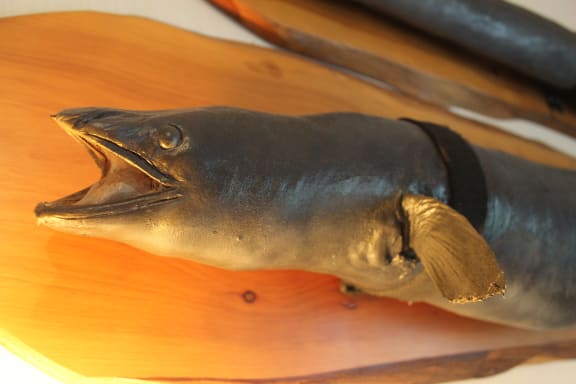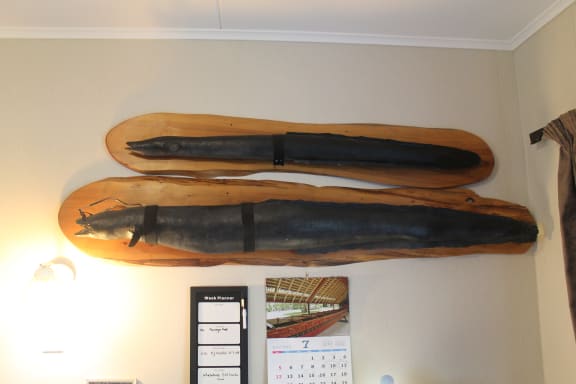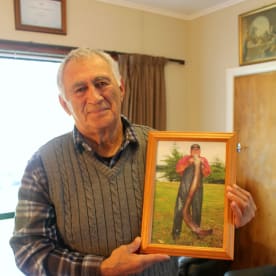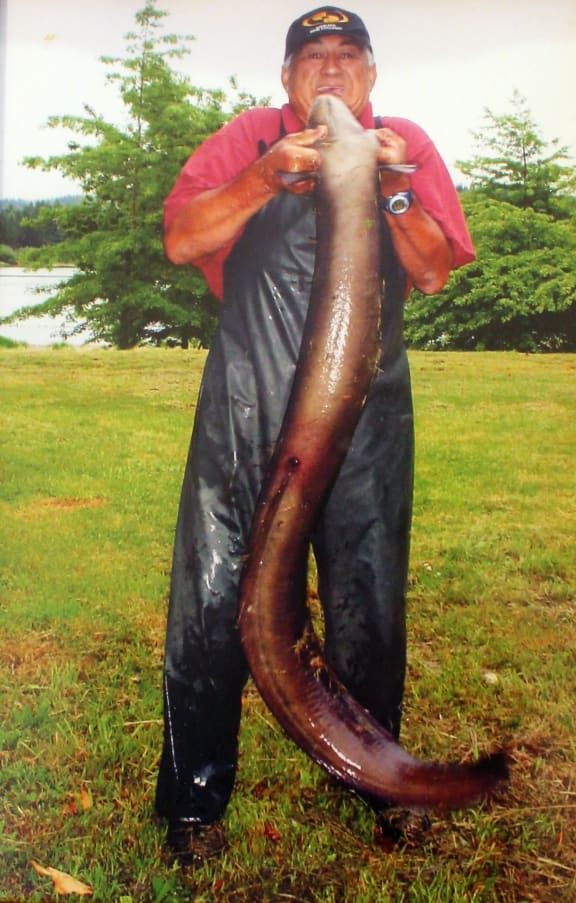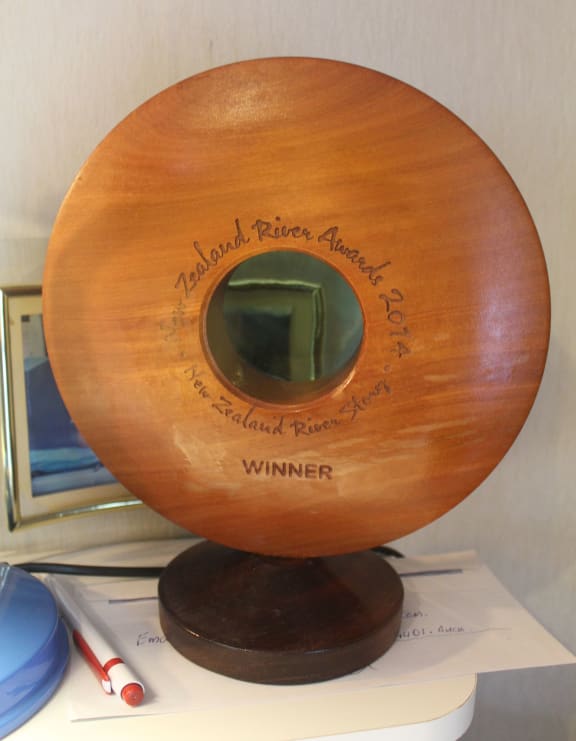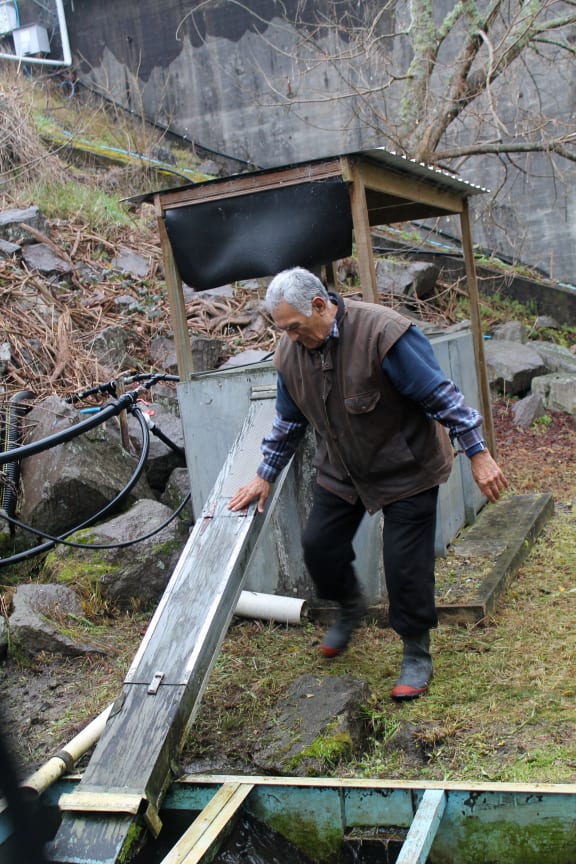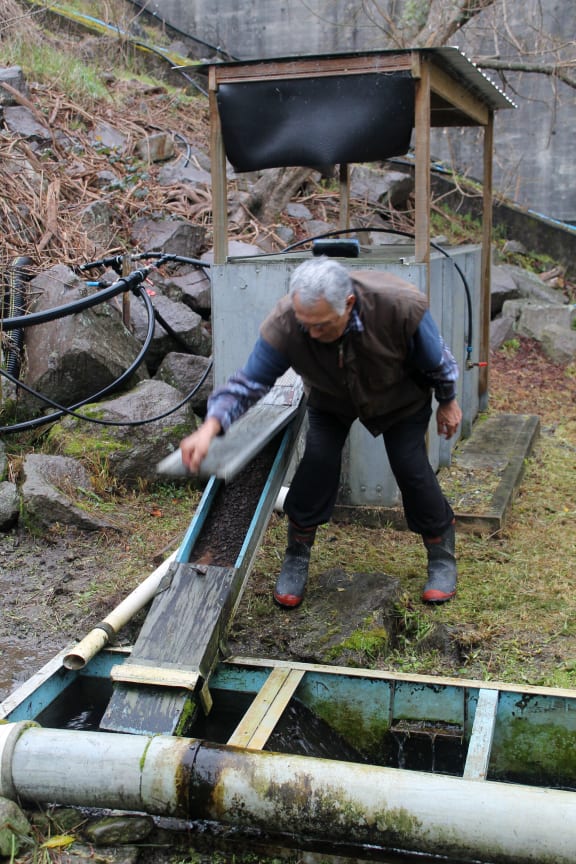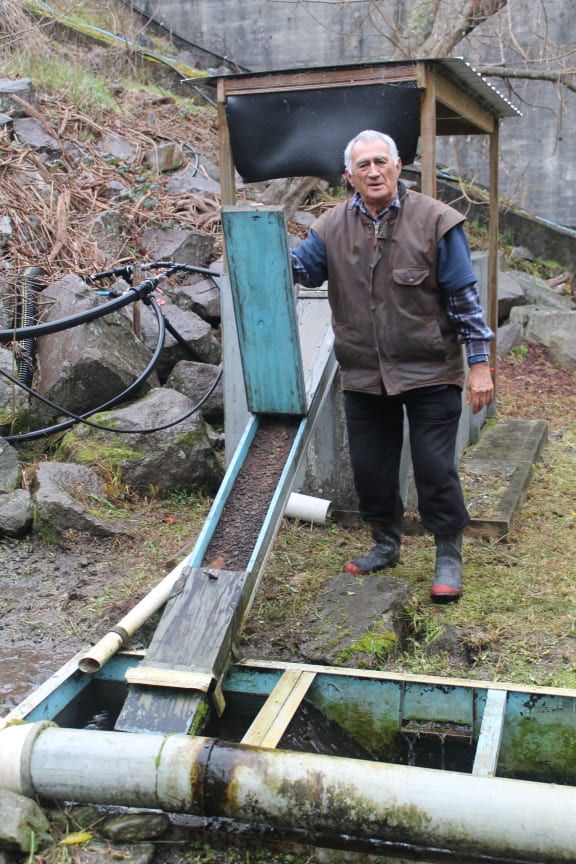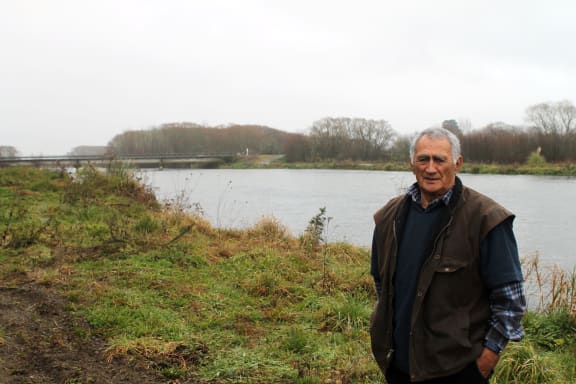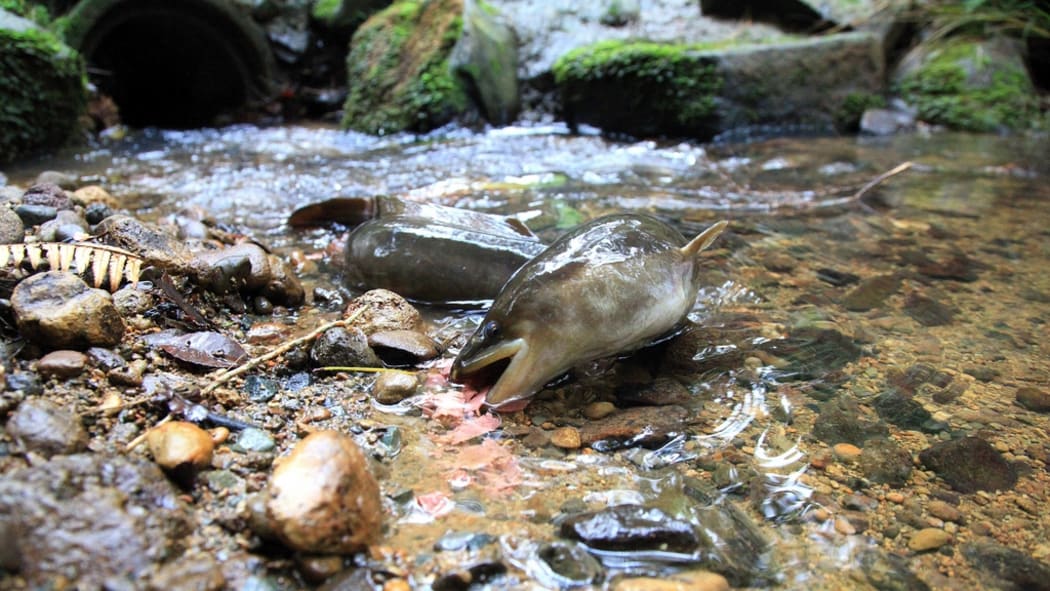
Small longfin eel. Photo: Tony Foster (CC BY-ND 2.0).
“My priority right from day one was water. Because if we haven’t got good water, where’s our next two generations from my children, and their children and their children, gonna be?” - Bill Kerrison
Bill Kerrison has lived near water – salt and fresh – his whole life. And despite stints mining, farming and in forestry, he's always managed to find his way back his life source. Much like his beloved tuna, or native longfin eels.
While these sleek, black giants have a reputation for lurking in the murky depths of our waterways, Bill Kerrison regards them as one of the most intelligent species of fish on the planet and has a deep connection with what he affectionately calls his beauties.
A connection that started way back in the 1940s in Thames, when as a young boy, he befriended a sinewy mass of eels that lived under the local jetty.
He was put to work on his father’s mullet boat but when a storm left her a wreck, the family packed their bags and moved further up the Coromandel Peninsula to go shearing.
“I loved it, I loved it, it was right in my environment,” says Bill. “But I ended up running away from home…people have their fights…and of course alcohol is a big distribution to that…I knew I had to go.”
So at 14 and a half, Bill hitched a ride across the Hauraki Plains to his older brother’s house near Rotowaro in the Waikato.
“That was it, I was underground just after I was 15 and stayed underground until I got called up into the armed services…that was the beginning of my man’s life then.”
After the army, Bill spent time in freezing works and as an engineer, before finally coming to Edgecumbe to run a fish and chip shop. It was here that he met his second wife Ruby, whom he affectionately calls 'mum'.
After the 1987 Edgecumbe earthquake Bill and Ruby moved inland to farm at Galatea. And while it's 70 kilometres from the coast, water was once again close by.
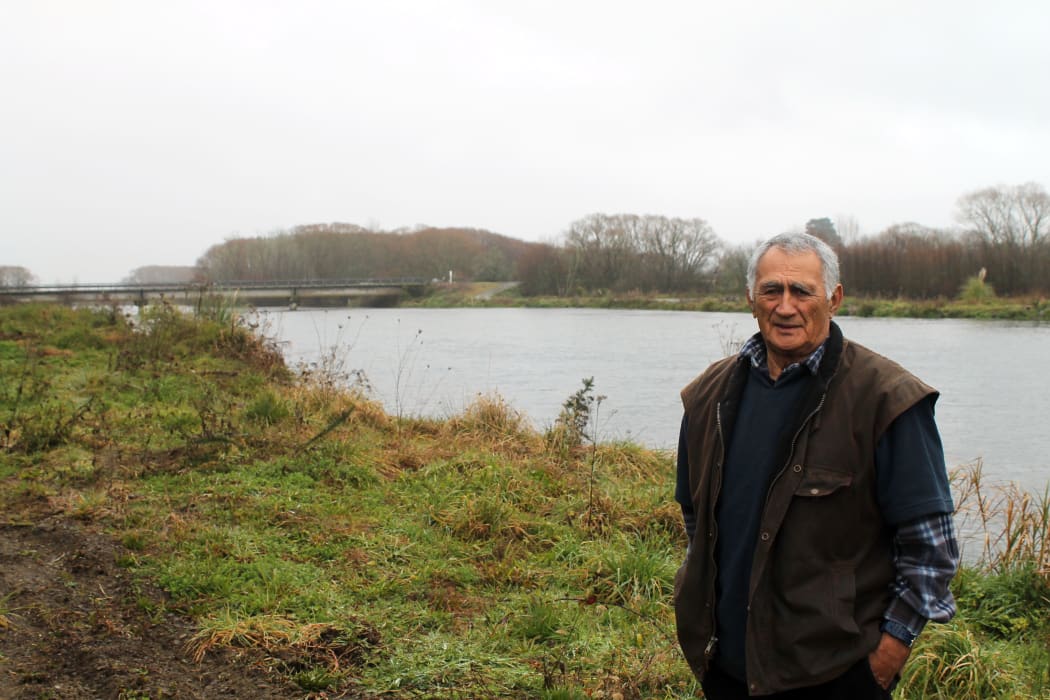
Bill Kerrison on the bank of the Rangitaiki River. Photo: RNZ/Lisa Thompson
Behind the Kerrison's property flows the mighty Rangitaiki River, the longest in the Bay of Plenty, 155 kilometres in length. Once free-flowing, the river is now damned for hydroelectricity. And it was on the banks of the Aniwhenua dam that Bill's life took a significant turn in 1991, when he came face-to-face with his beloved long-fin eels again.
“I was only about 20 metres from the screens and I could see all these big dead bodies lying on the concrete. All these huge eels, they were mangled up.”
For over a decade the migrating eels had been getting stuck against the screens in front of the intake pipes to the dam. Bill says they were removed and dumped on the side of the river before being unceremoniously buried. And if any were lucky enough to get through, they were quickly mutilated by the huge turbines.
Native longfin eels can grow to 3 metres and 40 kilograms and some will live to over 100 years in our rivers and lakes. But many will return to the ocean after 40 to 80 years and swim to Tonga to reproduce. The juvenile eels or elvers will then make the return journey back to New Zealand - a 5000 kilometre round trip.
Heartbroken by the disruption in the life cycle of a generation of Rangitaiki eels, Bill knew he had to help.
“I had to decide then what was going to change my life into changing this whole matter, I just said ‘It stops here today.’”
For nearly quarter of a century, Bill Kerrison has been working tirelessly to help save the Rangitaiki’s eels. Each year he traps and transfers the eels and other native fish species past a series of dams, so they can continue maturing or head out to sea to breed.
It's estimated he's so far helped relocate 30 million eels, clocking up 25,000 kilometres annually in his car in the process. While he knows he can't save them all, Bill says every eel he does save "is a bonus".
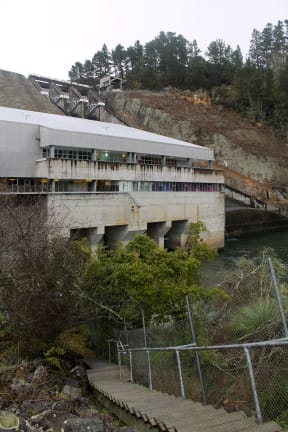
Twice a day, Bill will walk up these steps beside the Matahina Dam carrying the elvers in buckets to his ute. Some mornings he will go up and down the 45 steps as many as 20 times. He’ll then drive 40 kilometres upstream to deposit the elvers above the dams. Photo: RNZ/Lisa Thompson
Come autumn when the adult eels start migrating downstream, Bill will spend nights out on the hydro lakes in his small boat catching the fish and relocating them below the dams. And in the spring, he starts the process of trapping millions of elvers below the Matahina Dam and driving them to locations above the power stations where they can mature.
Bill recycles water used by the dam system into the river and attracted by the slightly warmer water, the elvers make their way to left bank directly below the outflow and make their way up a race into a holding tank. And it's not just the baby eels that are benefiting from Bill's trap. Koura or freshwater crayfish also find their way into the tank, along with bullies.
Bill Kerrison is nearly 80 and thinks it's time to start contemplating handing on the reigns to someone else. He has plans to spend more time on the coast with Ruby.
It's been a project like none other for him. He's battled vandals, poachers, power stations, butted heads with scientists and even members of his own iwi, in his quest to transfer the eels, but it's never deterred him from his determination to help his beloved tuna. And with a good team of helpers now behind him and the creation of the Rangitaiki River Forum in 2012, Bill's now confident his departure won't see all of his good work undone.
Lisa Thompson recently travelled to the Bay of Plenty to meet Mr Tuna.
Video: River story winner Bill Kerrison - Saving NZ's longfin eel courtesy of Gareth Morgan
